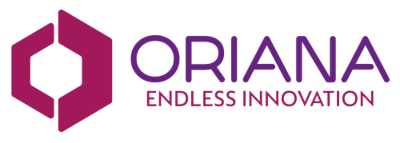Processes, increased efficiency and workflows. These are concepts which are easy to grasp, and which can clearly be done using IT systems. Computers behave logically, and are good at achieving consistent results at speed, so the whole area of Business Process Management is based on repeatable and predictable actions. A system is built to perform the same tasks again and again, freeing up people to do more interesting and customer-facing activities. For example, BPM handles routine invoicing effortlessly.
What’s up Doc?
However there are many industries and professions where things are not so simple, and must be taken on a case-by-case basis. Typically these will be areas where there is a high level of human interaction, and variation. Medicine deals with people of all ages, and levels of illness, and in addition the health of individuals is always dynamic. The right treatment for a patient a year ago is not necessarily correct now. Medics can’t prescribe the same treatment for a ten year old as for a seventy year old, so there is a tendency to view every case as unique. If you have a great doctor, you may welcome this personalized approach, however it’s very rare that they’ll have access to all your records over all your years, can read every test result you ever had, or easily look at other cases which are similar to yours. In short, the information is silo-ed, often only available on multiple systems, some of which may even be pre-digital. (There is increasing use of Electronic Health Record systems, but these are not always as effective due to different approaches and priorities in inputting data).

Multi-viewpoints
This situation doesn’t just apply to medicine: any multi-viewpoint, dynamic business or social model seems too far removed from the BPM to take meaningful advantage of it. And so we must rely on the skill, wits and in-depth knowledge of our doctors, town-planners, educators, lawyers and many other professionals who make it their job to work on ‘cases’. We recognize that there are huge inefficiencies built into this person-to-person interaction, but surely that’s better than trying to force a BPM structure onto situations where judgement plays such an important part? And yet, wouldn’t it be cool if case-by-case thinking could be merged with BPM?
It can, and it’s called Dynamic Case Management, where people skills and technology come together, automating routine work and improving the reliability and efficiency of ‘special’ situations. Take, for example, an insurance company. Every day there will be routine claims for house or car damage, where a mass of data must be collected, most of which is generic, and therefore suited to BPM. At the same time every case will be unique, and may involve witness statements, recorded on paper, police reports, medical records, and so on. A claims investigator working for an insurance company therefore has to wade through a huge pool of information, some of it on the main system, some on personal computers and via emails, and some of it in paper form, awaiting digitization. DCM aims to bring this together, making information accessible across the system.
But someone has to program this, right?
You may have spotted the weakness here though: With a significant proportion of ‘unique’ information needing to be input, doesn’t that mean that specialist programmers must be involved? Thanks to no-code/low-code platforms, such as Oriana’s low-code platform, the answer to that is ‘No’. Because of the graphic user interface of Effector, it’s very easy to arrange workflows to accommodate Case Management situations, meaning that the people who do the job of collating and assessing all the information are also in control of how it is input to the system. So with Effector set up, no special programming skills are required. Now all the information for a case is in the same place, allowing valuable new insights to become available. For instance, the system can alert an investigator if a particular make of car is disproportionately involved in accidents.
Users define the system
The approachability of the Oriana Low-Code Platform goes beyond ease of use for DCM however, because the platform can be custom-tailored by the people actually using it. This means – thanks to the ‘building block’ approach using a large library of customizable templates, and because there is little or no need to be able to program – that ideal systems can be designed in-house. People who constantly do the actual work – often called Citizen Developers – are those that know how best they would like a system configured. With Oriana, they have the freedom and access to have their own DCM needs perform with maximum efficiency, and flexibility. If those needs change, or if users see better ways of doing things, then it’s really easy to return to Effector and further adjust the system to provide optimum performance.
Of course you don’t have to be a medic or an insurance investigator to benefit from this adaptive case-by-case approach. DCM, with Oriana’s low-code orchestration, allows any organization to quickly build and deploy ‘case-like’ apps, without the need of custom coding.
We rest our case.



